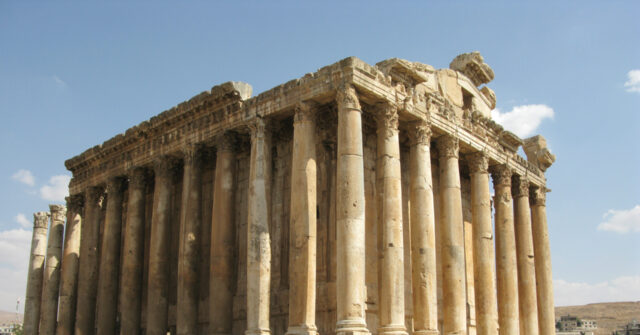On Thursday, Israel asserted its commitment to protecting Lebanon’s cultural heritage sites amidst ongoing military operations and evacuations in regions near historical landmarks. The focus of concern is Baalbek, a city housing ancient Roman ruins recognized by UNESCO as a World Heritage Site. Despite its geographical distance from the southern border, where Hezbollah has been launching attacks into Israel for over a year, Baalbek’s significance lies in its proximity to the Syrian border, where Hezbollah is known to smuggle weapons supplied by Iran. The Israeli military’s recent orders to evacuate residents from Baalbek have heightened fears among local communities regarding the safety of these invaluable archaeological treasures.
In a press briefing, Israeli government spokesman David Mencer addressed growing apprehensions around historical site safety. He confirmed that the Israel Defense Forces (IDF) are committed to ensuring the protection of cultural sites from conflict-related damage. However, he placed the responsibility for escalating conflict in the region on Hezbollah, attributing the current state of war to their recent hostilities against Israel. The situation has become increasingly dire for civilians in Israel, with Mencer reporting that around 58,000 residents have been displaced due to relentless rocket attacks, resulting in fatalities and injuries since the border’s quiet period ended with Hezbollah’s resurgence in aggression following the Hamas terror attacks.
The backdrop to this turmoil also includes a deal struck between Israel and Lebanon in 2022 concerning offshore natural gas development, which was intended to stabilize relations and deter Hezbollah’s military ambitions. However, Mencer hinted at a shift in Israel’s strategic approach in light of ongoing tensions. While acknowledging the need for a new strategy, he emphasized Israel’s desire for peaceful relations with Lebanon and its people, contrasting this with the Iranian regime’s influence over groups like Hezbollah that seek confrontation. He underscored that nations like Israel could collaborate with numerous Arab states, evident through recent political accords, while Iran pursues a dominance that complicates peace efforts.
The backdrop of current conflict deteriorates Israel’s security atmosphere against a backdrop of historical grievances and ongoing territorial disputes. Mencer’s outlook reflects a sentiment among Israeli leadership that Iran’s ambitions and actions have disrupted potential peaceful negotiations and wider acceptance of Israel in the region, particularly highlighting how Hezbollah’s military actions threaten stability. The complexity of regional politics and the sectarian influences exerted by Iran exacerbate the existing tensions, resulting in fragile relations with Lebanon and an uncertain future for peace in the area.
Furthermore, the Israeli government regards the military engagements not only as acts of defense but also as critical steps in addressing larger geopolitical threats posed by Iranian influence through proxies like Hezbollah. The emphasis on cultural heritage site preservation interlinks with a broader narrative surrounding national identity and historical legacy. As Israel prepares for continued actions against Hezbollah, the vulnerability of cultural landmarks raises questions about the long-term impacts of war and conflict on shared histories, leaving many to ponder the fragility of peace in a historically complex region.
As tensions escalate, Baalbek’s residents and knowledgeable communities worldwide await to see how these developments unfold, bearing witness to the interplay of military strategy and cultural preservation. The IDF’s commitment to safeguarding these sites amidst the conflict serves as a reminder of the enduring importance of heritage as both a source of national pride and a focal point in the discourse surrounding peace and warfare. The international community remains vigilant, considering not just the immediate humanitarian impacts but also the broader implications such conflicts may have on cultural heritage and collective memory in the region.

